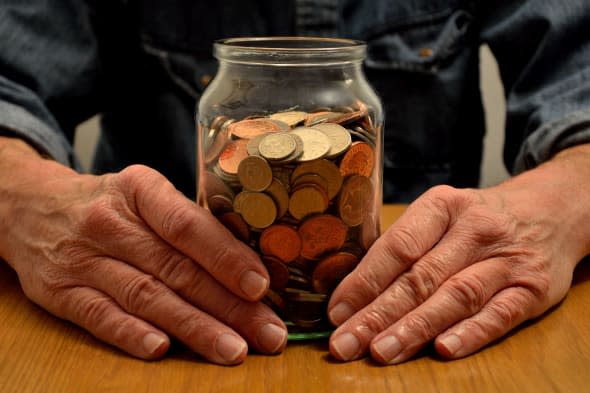Savers urged: register now to pay no tax on savings interest

A million savers are being urged to register with HMRC to let them collect the interest on their savings tax-free.
Next month, a zero-tax band on the first £5,000 of savings interest comes into force, replacing the system under which people pay 10% on their first £2,880 of savings interest.
The change will affect anyone with a taxable income - excluding interest from savings accounts - of less than £10,600, plus savings interest of less than £5,000 a year.
Compare savings and ISA rates
These people can now register as non-taxpayers to get their savings interest tax-free. And, says HMRC, an additional half a million savers could also get back some of the tax they've already paid on their savings interest.
"A key part of our long term economic plan is to support savers and boost hardworking people's financial security at all stages of life," says Chancellor George Osborne.
"That's why one month from now, the lowest earners can get their savings interest tax-free. This will provide a massive boost for 1.5 million savers across the country, putting money in the pockets of those who need it most."
Instantly calculate your pension income options
Savers can check whether they're eligible with a new online calculator on the HMRC website, here. You'll need to include any taxable wages, pensions, benefits and savings that you receive, as well as any tax-free personal allowance that you transfer or receive from a spouse or civil partner.
Those that are eligible will need to register their account with their bank or building society, filling in an R85 form. If eligible to reclaim tax they've already paid on interest, savers should complete form R40 and send it to HMRC or include the figure on their tax return.
Other benefits for savers also come into force on April 6. The ISA limit will increase to £15,240, making ISAs more flexible by allowing all of that money to be invested in stocks and shares or cash.
People will also be able to transfer Child Trust Funds into Junior ISAs, and spouses will be able to inherit their deceased partner's ISA benefits.
Compare savings and ISA rates
Case studies:
Derek - From April 2015 Derek will earn £12,000 a year in his part-time job as a gardener. His tax-free personal allowance is £10,600, so he is taxed at 20% (the basic rate of income tax), on £1,500 of his wages. He then earns £400 a year in interest on his savings. When you add up Derek's earnings and his savings income it equals less than £15,600, so Derek is eligible to register for tax-free savings.
Claire - From April 2015, Claire will earn £25,000 in her job as a chef. Her tax-free personal allowance is £10,600, so she is taxed at 20% on £14,500 of her wages. Claire also earns £300 a year in savings income. However as Claire earns over £15,600, her savings income is also taxed at 20%.
Sharon - From April 2015, Sharon will receive £14,000 per year from her pension. Her tax-free personal allowance is £10,600, so she is taxed at 20% on £3,500. Sharon also earns £2,000 a year in savings income. Sharon's total income is £16,000. Because Sharon's total income is more than her personal allowance plus £5,000, she is not eligible to register for tax-free savings, but will be able to claim back some of the tax on her savings income.
More on AOL Money:
Savings bombshell for pensioners: rock bottom ISA rates for a decade
Instantly calculate your pension income options
Brits to waste £1.3 billion in ISA tax savings




